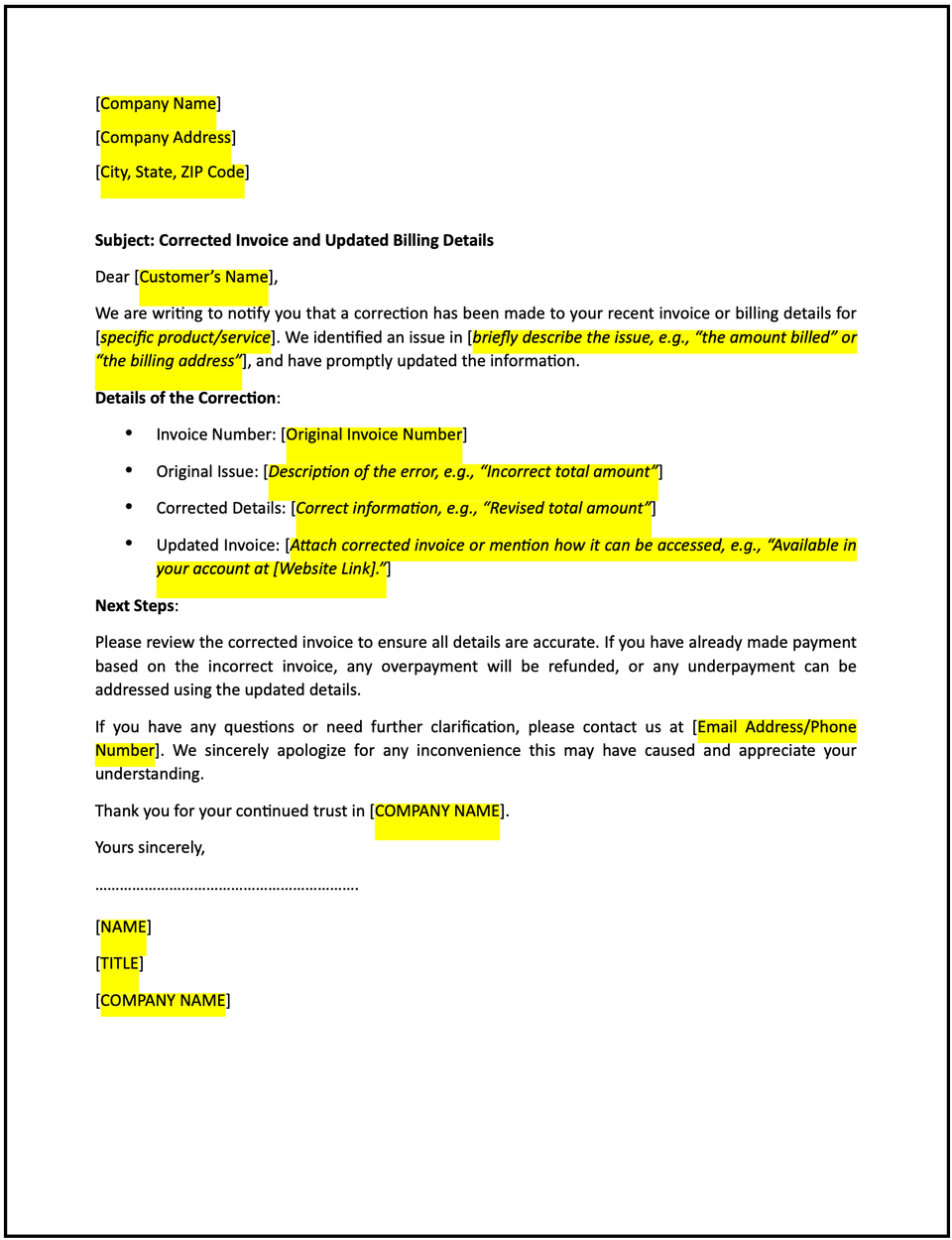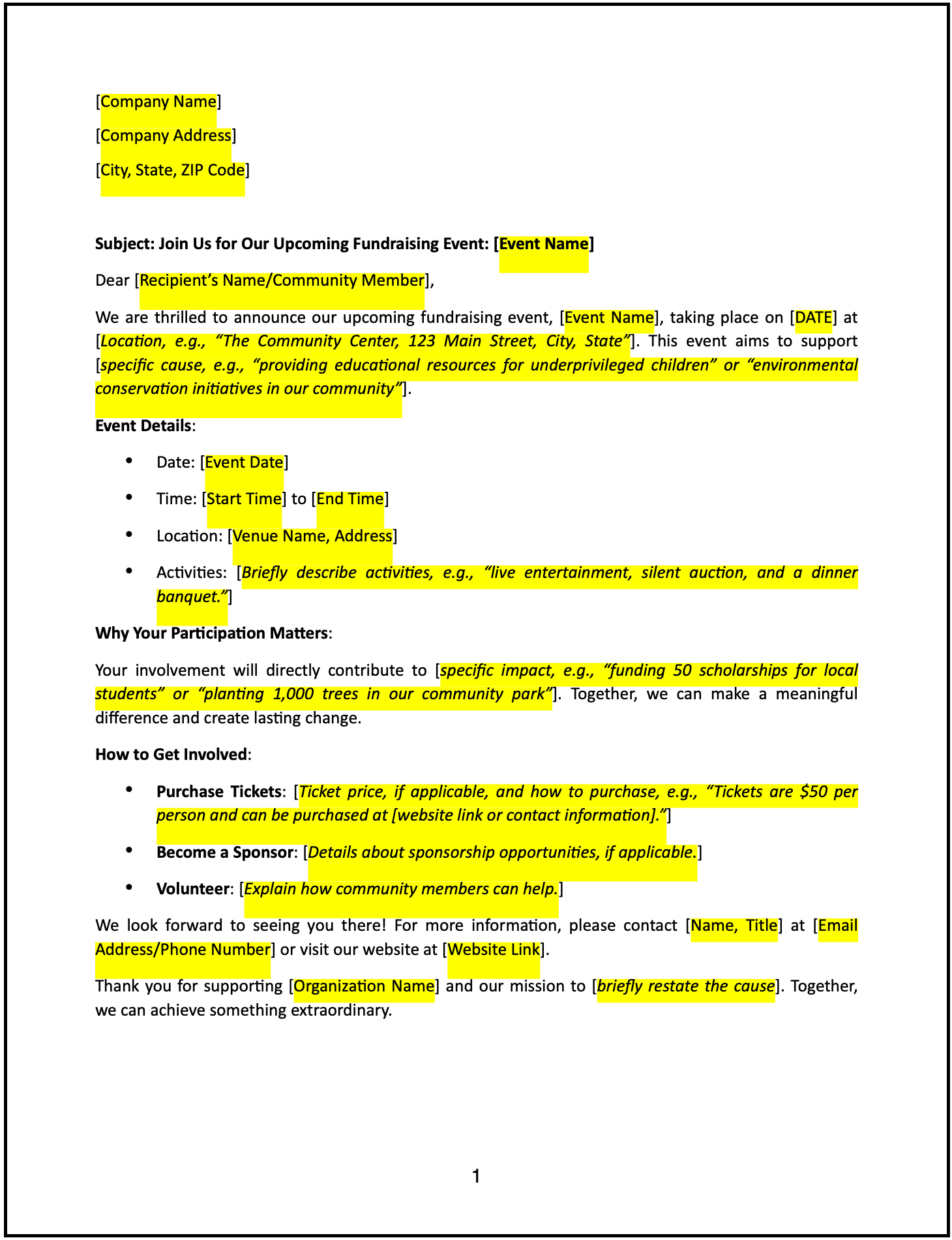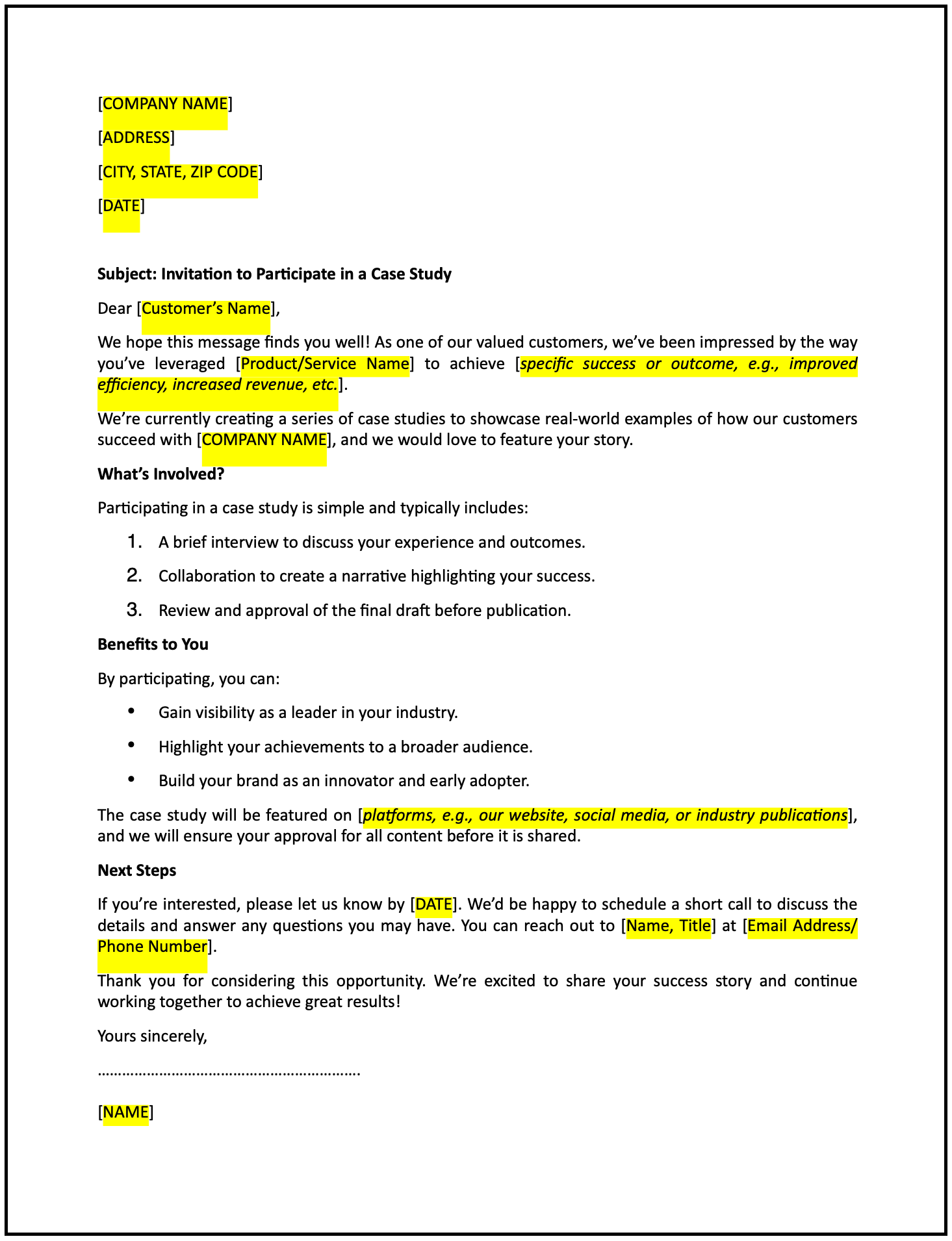Letter of corrected invoice or billing details: Free template

Letter of corrected invoice or billing details
A corrected invoice or billing details letter is a formal communication used to notify a customer, client, or vendor of changes to a previously issued invoice or billing document. This letter outlines the original billing information, explains the correction, and provides the updated invoice or billing details for review and payment.
Sending this letter ensures transparency, maintains professionalism, and helps prevent disputes or delays in payment. It is typically used when billing errors are identified, such as incorrect charges, wrong dates, misapplied taxes, or duplicate items.
How to use this corrected invoice or billing details letter
- Open with an introduction: Address the recipient respectfully and reference the original invoice by number and date.
- State the purpose: Clearly explain that you are issuing a corrected invoice or updating billing details due to an identified error or discrepancy.
- Summarize the correction: Briefly describe what was incorrect in the original invoice and what has been amended (e.g., pricing error, incorrect service dates, tax adjustments).
- Attach or reference the corrected document: Include the corrected invoice with the letter or provide a direct reference or link to it.
- Provide instructions for next steps: Clarify whether any action is required from the recipient, such as adjusting payment, reprocessing the invoice, or confirming receipt.
- Reaffirm appreciation and professionalism: Acknowledge the importance of accurate billing and thank the recipient for their understanding.
- Provide contact information: Include your full name, title, company name, phone number, and email address so the recipient can reach out with questions or concerns.
Benefits of using a corrected invoice or billing details letter
- Promotes accuracy: Ensures the billing records reflect the correct details, reducing confusion or payment delays.
- Reflects professionalism: Demonstrates accountability and a commitment to clear communication.
- Encourages trust: Transparent correction of errors strengthens the customer or vendor relationship.
- Prevents disputes: Promptly addressing billing issues helps avoid misunderstandings or escalation.
- Supports accounting integrity: Maintains accurate documentation for financial and audit purposes.
Tips for writing an effective corrected invoice or billing details letter
- Be specific: Reference the original invoice number, issue date, and clearly outline the corrections made.
- Use professional language: Maintain a respectful and concise tone, especially when acknowledging the error.
- Provide context: Briefly explain why the correction was necessary, such as a clerical error or misapplied fee.
- Highlight next steps: Let the recipient know whether any action is needed, such as issuing a revised payment.
- Include supporting documents: Attach the corrected invoice or updated billing information for clarity.
- Keep it concise: Focus on the correction and resolution without unnecessary detail.
Frequently asked questions (FAQs)
Q: What details should I include in this letter?
A: Include the original invoice number and date, a description of the correction, the corrected invoice, and any instructions for the recipient.
Q: Should I personalize the letter?
A: Yes. Address the recipient by name and reference the specific invoice or transaction to maintain clarity and professionalism.
Q: Who typically sends this letter?
A: Accounting or finance team members, billing specialists, or business owners responsible for financial operations.
Q: How formal should this letter be?
A: The letter should be clear and businesslike, with a tone that is professional and customer-friendly.
Q: When should this letter be sent?
A: As soon as the billing error is identified and the corrected invoice is prepared.
Q: Can this letter include a request for confirmation?
A: Yes. Asking for acknowledgment or confirmation of receipt ensures the recipient has reviewed and accepted the correction.
Q: Is it appropriate to apologize in this letter?
A: If the correction is due to your error, a brief and professional apology can demonstrate accountability and goodwill.
This article contains general legal information and does not contain legal advice. Cobrief is not a law firm or a substitute for an attorney or law firm. The law is complex and changes often. For legal advice, please ask a lawyer.


